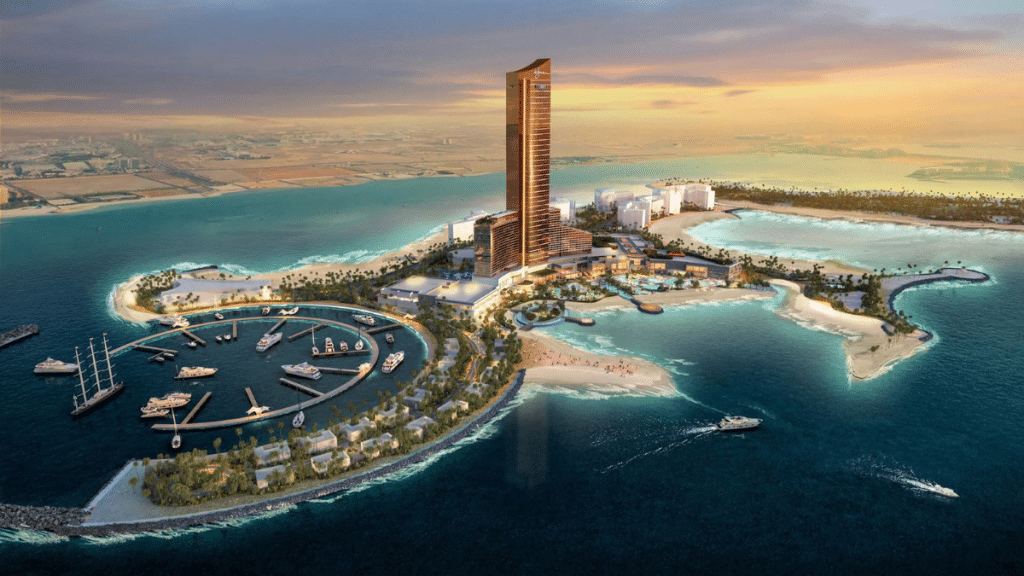As cities across the globe grapple with rising sea levels, dense populations, and limited land, artificial islands are emerging as a viable solution to many 21st-century urban challenges. Nowhere is this trend more visible than in Dubai, where coastal development has entered a new phase—one that combines engineering ambition with smart technologies and urban sustainability.
With the launch of Dubai Islands, a massive new archipelago off the city’s northern coastline, the emirate is rethinking how waterfront communities are planned, built, and lived in. These aren’t just luxury enclaves or tourism hubs—they’re testbeds for how smart urbanism can function in engineered environments.
Why Artificial Islands Are Back on the Agenda
Artificial islands aren’t a new concept. From the Netherlands to the Maldives, governments and developers have long used reclaimed land to address space constraints and extend urban borders. But what’s changed is the strategic intent behind them. Rather than serve as vanity projects, today’s island developments are increasingly aligned with broader goals: climate resilience, digital integration, resource efficiency, and sustainable urban growth.
Dubai Islands reflects this shift in mindset. Planned as a series of mixed-use communities, the project emphasizes long-term livability over short-term spectacle. The inclusion of residential neighborhoods, green spaces, marinas, and commercial hubs is part of a broader effort to decentralize the urban core and offer alternatives to the city’s densely built-up districts.
Several residential communities, including Bay Grove Residences Dubai Islands, have already been announced as part of this evolving urban plan.
Smart Living at District Scale
While the term “smart home” once referred to individual devices—thermostats, lights, or door locks—today it’s about networks. The concept has scaled up, and now refers to buildings, blocks, and even entire districts that are digitally integrated and responsive to real-time data.
On artificial islands, this approach offers clear advantages. With infrastructure built from the ground up, planners can embed smart technologies directly into utilities, transportation networks, and urban services. It also allows for a seamless connection between private homes and public infrastructure—whether through shared solar grids, automated waste collection, or integrated mobility hubs.
Within Dubai Islands, the focus on integrated planning extends to new residential projects such as Zephyra Residences at Dubai Islands, among others, which are expected to be part of this digitally enabled urban environment.
What Makes a Coastal Community “Smart”?
Smart coastal living isn’t just about gadgets. It’s about resilience, adaptability, and efficient use of resources in environments that are particularly vulnerable to climate and infrastructure stress.
Some of the core characteristics of a smart island development include:
- Real-time monitoring of utilities (water, energy, waste)
- Flood risk mitigation through predictive modeling and adaptive infrastructure
- District cooling systems to reduce urban heat islands
- Public Wi-Fi and 5G coverage across residential and commercial areas
- Integrated transportation nodes supporting electric vehicles and micro-mobility
These features aim to make daily life more convenient while reducing environmental impact—an important consideration for man-made environments exposed to coastal conditions.
The Role of Data in Urban Performance
Central to any smart development is data. Whether it’s anonymized mobility patterns, energy consumption trends, or building performance metrics, the data layer informs nearly every decision in a smart district.
On artificial islands, this data can help optimize land use, improve emergency response, and fine-tune systems in real time. For example:
- Smart lighting systems can adjust to pedestrian activity and natural light
- Building management systems can adapt to occupancy levels
- Water irrigation can be controlled based on soil moisture and weather forecasts
Crucially, this data isn’t just collected—it’s acted upon through algorithms, AI platforms, and predictive models that enhance both operational efficiency and user experience.
Climate Adaptation: More Than a Buzzword
Coastal living comes with inherent risks—erosion, rising sea levels, and extreme weather events. Smart island projects must therefore prioritize not only digital infrastructure, but also environmental resilience.
Key strategies include:
- Elevated foundations and sloped streets for drainage
- Salt-resistant materials in public infrastructure
- Restoration of marine ecosystems around the islands for natural buffering
- Energy-efficient building orientation to reduce cooling loads
Dubai’s climate—hot, dry, and coastal—adds complexity, but also forces innovation. As such, the Dubai Islands initiative serves as a useful case study in how cities can design with long-term climate realities in mind.
Human-Centered Design in Smart Communities
As technology becomes more embedded in the built environment, there’s growing awareness that livability must remain at the center. A truly smart community doesn’t just optimize systems—it enhances daily life.
Features such as:
- Walkable neighborhoods with shaded pathways
- Community centers and co-working hubs
- Localized energy production and sharing
- Digital platforms for resident feedback
—are increasingly prioritized in the master plans of artificial island developments. The goal is to foster interaction, inclusion, and adaptability—not just automation.
Dubai as a Global Laboratory
With its combination of capital, speed, and ambition, Dubai continues to serve as a living laboratory for future urban concepts. Artificial islands are one frontier where these ideas are being tested and refined at scale.
But this isn’t just about one city. As more coastal regions around the world confront the dual pressures of urban growth and environmental risk, the lessons from Dubai’s smart island developments could have broader relevance.
Whether it’s the integration of urban data systems, the shift to renewable energy, or the creation of adaptable coastal infrastructure, these projects offer insight into what cities of the future may look like.
Smart homes are no longer confined to high-end apartments or niche tech enthusiasts. They’re becoming part of a wider movement toward responsive, efficient, and resilient urban design—especially in places where land must be created, not just occupied.
Dubai Islands, and the growing number of residential communities within it, represent a shift in how artificial land is used: not just to build more, but to build better.

